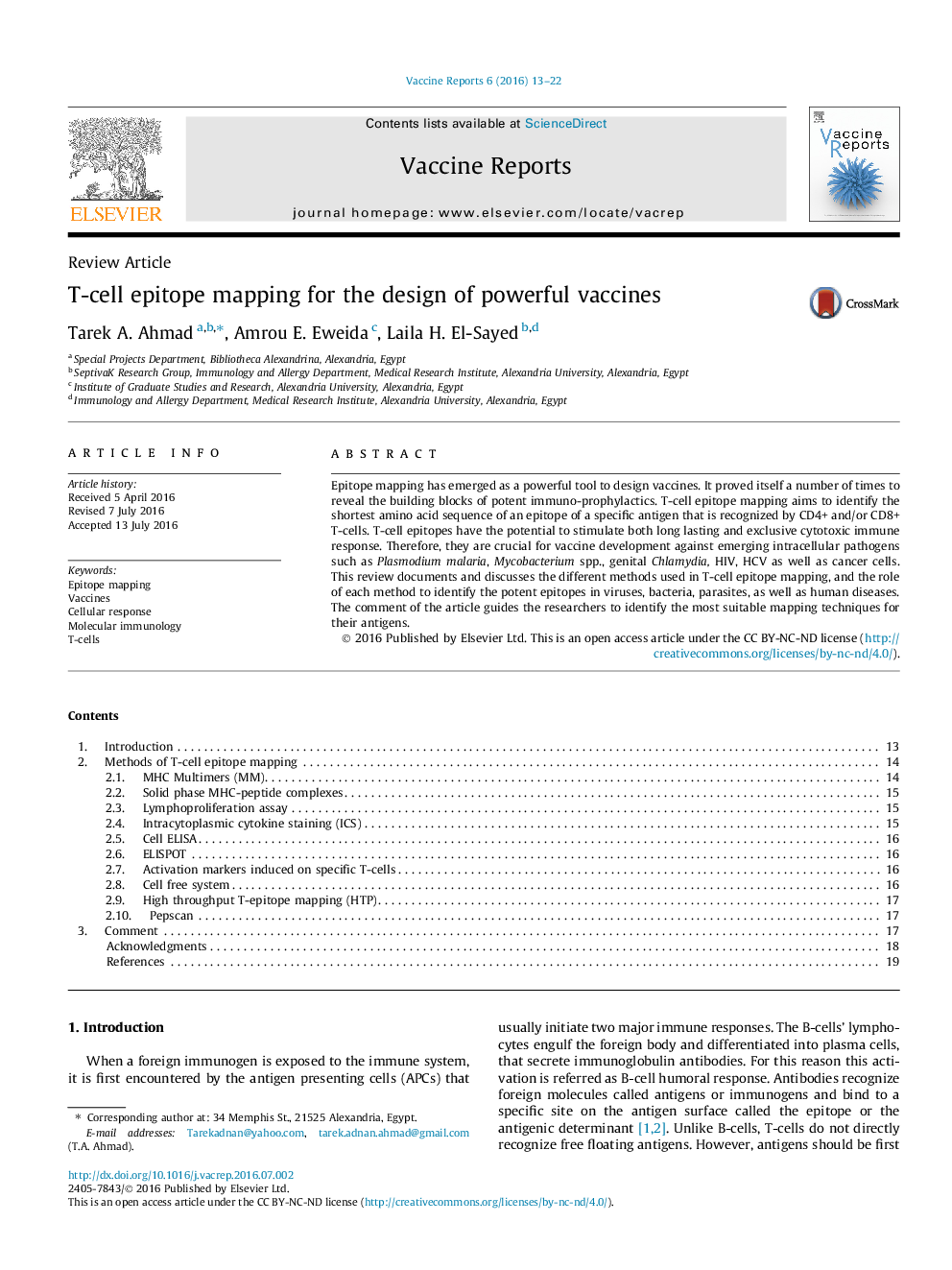| Article ID | Journal | Published Year | Pages | File Type |
|---|---|---|---|---|
| 2474429 | Vaccine Reports | 2016 | 10 Pages |
Epitope mapping has emerged as a powerful tool to design vaccines. It proved itself a number of times to reveal the building blocks of potent immuno-prophylactics. T-cell epitope mapping aims to identify the shortest amino acid sequence of an epitope of a specific antigen that is recognized by CD4+ and/or CD8+ T-cells. T-cell epitopes have the potential to stimulate both long lasting and exclusive cytotoxic immune response. Therefore, they are crucial for vaccine development against emerging intracellular pathogens such as Plasmodium malaria, Mycobacterium spp., genital Chlamydia, HIV, HCV as well as cancer cells. This review documents and discusses the different methods used in T-cell epitope mapping, and the role of each method to identify the potent epitopes in viruses, bacteria, parasites, as well as human diseases. The comment of the article guides the researchers to identify the most suitable mapping techniques for their antigens.
